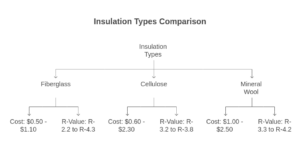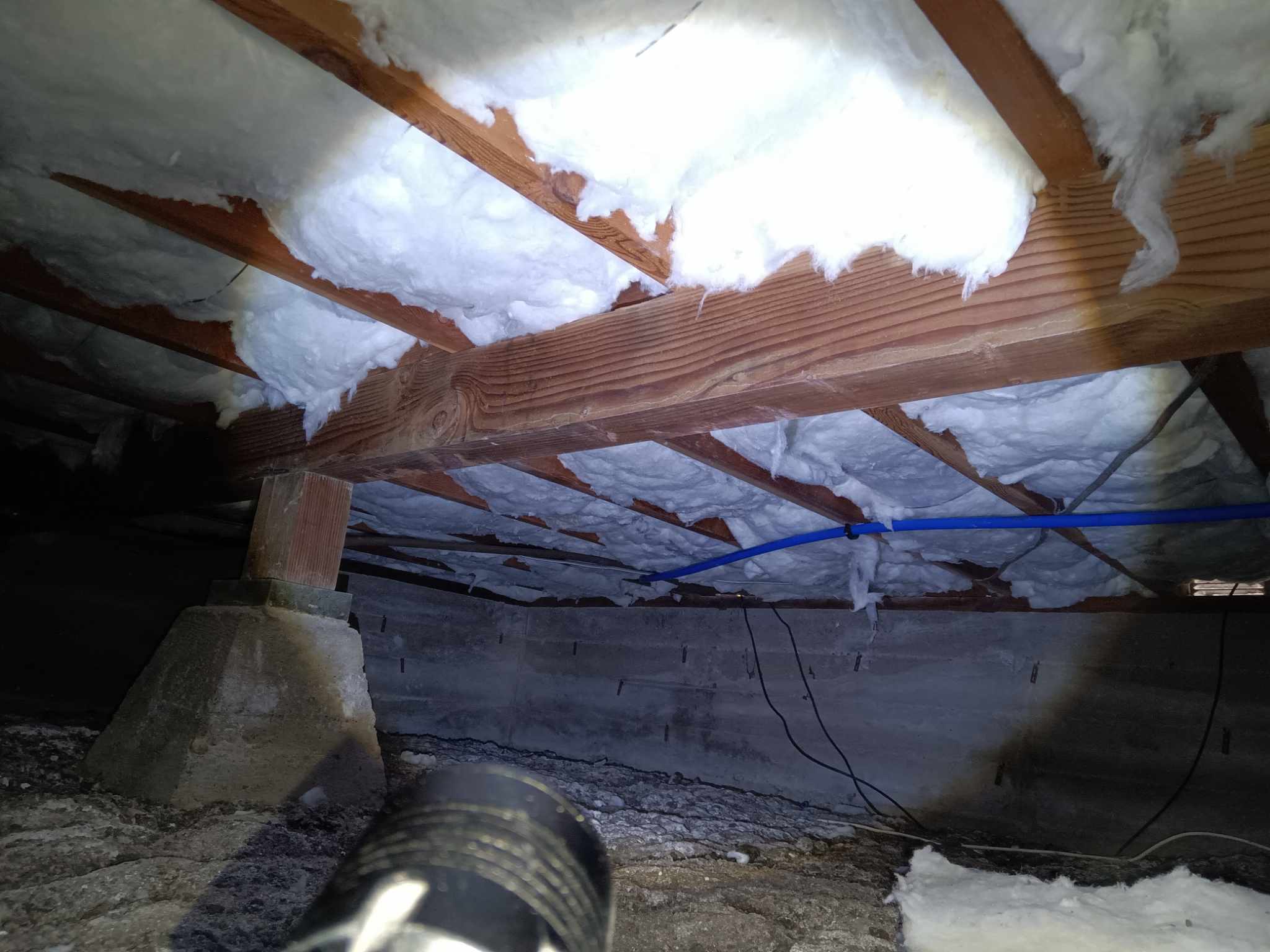Did you know that up to 30% of heat loss from the home occurs through the attic? (Source: U.S. Department of Energy). Choosing the proper insulation can lower your energy bills and help keep your home comfortable year-round. Therefore, picking the best blown-in insulation is extremely important.
My Insulation Guy offers the best-blown insulation for the attic, which helps to keep your home cozy and more energy-efficient.
In this guide, we will highlight some of the critical factors that make blown-in attic insulation essential for an energy-efficient home. Read to the end for more insightful information.
What is Blown-In Insulation?
Blown-in insulation is a type of loose-fill insulation made from fibreglass, cellulose, or mineral wool. Its easy installation method, using a blowing machine, makes it an efficient material for filling gaps and improving energy efficiency.
Benefits of Blown-In Insulation
- Enhances Energy Efficiency – Retains warmth during colder months and lowers the temperature in summer.
- Provides Noise Reduction – Serves as a noise barrier from the outside.
- Eco-Friendly Alternatives – Cellulose comes from recycled sources.
- Quick Installation– For the most part, a professional can install insulation in hours, not days.
- Cost-Efficient – This leads to lower overall heating and cooling expenditures.
Selecting the Right Blown-in Insulation for Your Home
When choosing blown-in attic insulation, remember to consider the following:
1. Material Types
- Fiberglass – Light, moisture resistant, and durable.
- Cellulose – Made of recycled paper for better coverage.
- Mineral Wool – Fire-resistant and soundproof.
2. R-Value
An R-value tells you how well the insulation works. The higher the number, the better. For attics, it is recommended that you use R-38 to R-60.
3. Moisture Resistance
Moisture can degrade the performance of insulation. Fiberglass and mineral wool have excellent moisture resistance.
4. Fire Safety
Cellulose is treated with fire-resistant chemicals, while mineral wool is naturally fireproof.
5. Price
Although fiberglass tends to be the most affordable option, cellulose, and mineral wool offer additional benefits, such as being environmentally friendly and soundproofing.
When Should You Remove Blown-In Insulation?
If your insulation is older, damaged, or moldy, you should consider removing blown-in insulation. Here are some signs that show that an upgrade is needed:
- Moisture Damage – If you observe mold or dampness.
- Pest Infestation – Rodents specifically like to nest in old insulation.
- Reduced Energy Efficiency – If your heating or cooling bills are climbing.
- Compressed or Worn-Out Insulation – Insulation can lose its effectiveness over time.
How to Remove Blow-In Insulation?
Removing blow-in insulation involves a complicated process that should be performed by experts. These are the steps an expert takes to remove insulation:
- Inspection – Locate areas that must be removed.
- Vacuum Extraction – Powerful vacuum that extracts old blown-in insulation safely.
- Disposal – Removal and safe disposal of hazardous and contaminated materials.
- Cleaning – Cleaning the area of debris and mold.
- New Installation – The installation of fresh, best-blown insulation for the attic.
Reasons to Hire an Insulation Removal Company
Although you can remove the insulation by yourself, it is better to hire an insulation removal company. Here are the reasons in favor of it:
- Proper Equipment – Professionals utilize industrial-grade vacuums for safer removal.
- Health Safety – The old insulation might contain dust, mold, or asbestos.
- Faster Process – Professionals will get in and out of your house quickly and effectively.
- Proper Disposal – Professionals will also transport the materials and dispose of them in an environmentally safe way.
Cost Breakdown of Blown-In Insulation

Aspects impacting cost:
- Home size – Larger homes will use more material.
- R-Value – Materials with higher R-Value will be more expensive to install.
- Installation fees – Professional installation will add to the cost of labor.
Real-Life Case Study: How Proper Insulation and Air Sealing Saved a Homeowner $500 Annually
A homeowner named John, residing in Texas, faced considerably high energy bills. His attic had fiberglass insulation from the time the home was built, and it was not performing well. An Insulation removal company removed the insulation and insulated it with cellulose (the best-blown insulation for an attic) with an R-value of 50. After making the upgrades, John’s energy bills dropped approximately by 25%, establishing over a $500 savings with the proper insulation.
Professional Perspective on Blown-In Insulation
“Blown-in insulation is one of the most economical methods to increase the energy efficiency of your home. It provides great coverage, filling all voids, to reduce heat loss by a significant amount.” – Mike Patterson, Certified Energy Consultant.
Final Thoughts: Improve Your Home’s Efficiency with Quality Insulation
Choosing the best blown-in insulation will be one of the best decisions you can make for your home. Not only will it help with energy efficiency and comfort, but it will also provide long-term cost benefits. If your insulation is old and not working correctly, consider consulting with My Insulation Guy, which provides the best insulation services for your home. For more information, you can contact us or visit our website. So don’t wait any longer. Start your journey towards an energy-efficient home today.
FAQs
- What is the lifespan of blown-in insulation?
Blown-in insulation can last 20-30 years, depending on the material and how well you care for it.
- Can I remove blown-in insulation by myself?
You can do it yourself, but it’s more complicated than you think. It’s always wise to hire an insulation removal company to make sure it is done safely and correctly.
- What is the best-blown in insulation for my attic?
Fiberglass and cellulose are generally the most popular because they are the most affordable insulation options.
- What does blown-in attic insulation cost?
Blown-in attic insulation typically costs between $1,500 and $3,500. The price will vary depending on the size of your attic and the material you use.
- How soon will I see energy savings?
You will see a reduction in your energy bill within the first month using the best blown-in insulation materials.

